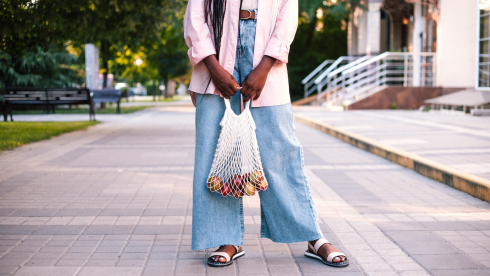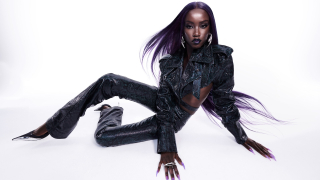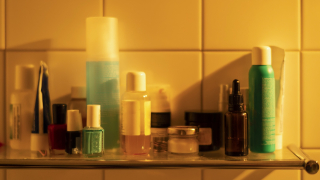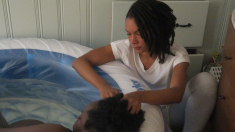What happened to me in 2008 did not happen because I am a young, Black female faculty member at school that has over 50 percent students of color; what happened to me occurred because I turned the world backwards on an angry White male student. We were in a regular weekly meeting of the newspaper staff, and the students were discussing the fact of the new edition, how well it had turned out, and the editor-in-chief said that although he was proud of the paper’s developments, he was not pleased with the fact that so few students regularly picked up the publication. Theories were thrown around as to why this was—the aesthetics were all wrong, the design didn’t pop, the stories could be flashier. Out of the corner of my eye, I thought I saw a noose hanging from the ceiling. When I looked again, it was gone. Another White male student, angry that writers had not made deadline, had thought it prudent to make a noose of his sweatshirt drawstring the fall before, to step up on the table and hang it, along with a menacing note to writers about the seriousness of deadlines. The two Black students in the room at the time protested, and asked him to take the noose down, but he didn’t listen. When they told the faculty newspaper adviser of the incident, he told them that he was not such a big deal, that the student had not meant the noose in a racist way. And when the students finally filed a formal legal complaint against their colleague, seeking some kind of institutional acknowledgment of this trauma, they were effectively gagged by the same academic powers that have been conducting the investigation. You see, once language enters the legal realm, it no longer belongs to us—it becomes the sole property of whatever individual or institution is under its employ.
History has a bad habit of reappearing when we are least ready to see it but the fleeting image of that noose would not leave my brain in that newsroom meeting. Nor could the conflagration of so many White bodies in one space (the entire editorial staff, except for one sole Somali student, who I had brought to the meeting from my Newspaper Activity class), while so many brown ones clustered outside it, largely indifferent to its power, but also wounded from the violence that had taken place there. I told the students that the staff needs to deal with the fact that this newsroom, and the newspaper in general, has historically been a space where white male experience has been centralized and validated, mostly to the exclusion of all others. I told them that the readership will continue to flag in a school that is more than half students of color, if the editorial staff continues to not represent their interests. In short, they don’t see themselves in the paper because they are not in the paper.
Silence. The clock ticked. Eyes rolled.
Later that night, I received an email, full of roiling, angry emotion, from a White male editor. He said that my words had angered him, that it wasn’t my place to say them, being a faculty member in the student newsroom. He said that my comments were racist and hateful, that they were akin to a white man standing up and saying that all Black women were irrational, and that my understanding of race was facile if I thought that White people was actually a tenable category to use. He said that I would not be welcome in the newsroom in the future, if I offered up a similar diatribe, and that what I had engaged in was racial harassment.
In the dark upstairs of my study, at 10:32 pm, my breath shallowed. Ida B. Wells, Fannie Lou Hamer, Harriet Jacobs, were my predecessors—racially, culturally, but most importantly, politically. I knew who had brought me to this place. I checked the windows to make sure they were locked, closed my eyes and began to count to 20 slowly. The thing is, I was never supposed to be there; these institutions were not built for Black women, or anyone of color for that matter, to live or work in. In fact, they were built to keep us out. I know this, intellectually, being a student of history, but every time I come up against the blunt-end truth of it, I still shiver. The student's message still demanded a response—ideally one that was as dispassionate as his was emotional.
Writing back, I thanked the student for bringing the issue to my attention, and said certain faculty and students had been discussing the future of the student newspaper and the future of the journalism program itself for some time, and that the entire school community would have to weigh in on it, in order to come to a viable solution. I said that I was CCing his message and my response to those individuals already engaged in this conversation, to further facilitate this interaction. I repeated my earlier statements about the history of the newsroom and newspaper itself being an unwelcome place for people of color, and said that last year’s noose incident was just the most recent demonstration of this inequity. I reminded him that our school was over 50% students of color, and that any organization that did not make a concerted effort to include them would therefore not succeed. Finally, I urged him to educate himself about the history of race and White privilege in this country, and invited him to an all-campus event that a colleague and I were invited to host on this topic later that week, as a place to start.
The student must have forwarded my message to the general newspaper account, because another editor, a young White woman, wrote back. She said that I had completely missed the point of the first student’s email, and echoed his characterization of my comments at the meeting as being racist and hurtful. Our door is open to all, she wrote, and demanded an apology. I felt my blood heat up, and I forced myself to breathe slowly, while I counted to 20 again. I find it more than a little shocking that you all believe that I am the one who should apologize, I wrote. I have never received an email as threatening and blatantly disrespectful, and I find it quite troubling that the only Black faculty member that has ever been associated with the journalism program is now being accused of racial harassment. I ended my message by endorsing the newspaper adviser’s idea for mediation. The student wrote back that he found my second response even more perverse than the first, and had been advised to consult a higher power, and quoted the school’s racial harassment policy. Do not have any further contact with him, colleagues advised. Your words can, and probably will be used against you.
I had been trying to restructure the conversation from an individual critique to systemic and structural critique. This students resisted from the start. It was an interesting irony that his tactic of accessing the legal establishment was, in fact, a way to abandon the narrative of the individual, and tap into the power of the institution – which, like all American institutions, was indelibly forged out of disciplining the racialized, gendered, lower-class masses. Once he did that, the story was as predictable as a Harlequin Romance novel. The next week, a member of the college leadership interviewed me for an hour in their office, grilling me with questions about what I had said when, to whom, and what my email messages had contained, who they were sent to, and why. They also interviewed the newspaper adviser, several other student editors, and staff members who had been there. It was all fairly terrifying. Perhaps I shouldn’t have spoken. The words crowded in my mind on more than one occasion, when, during the three-week interview process, I awoke at 5 am, my thoughts running around the room in circles.












